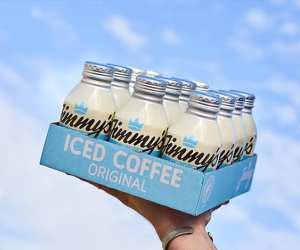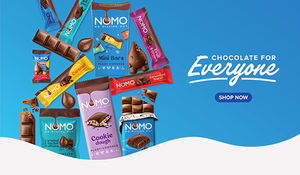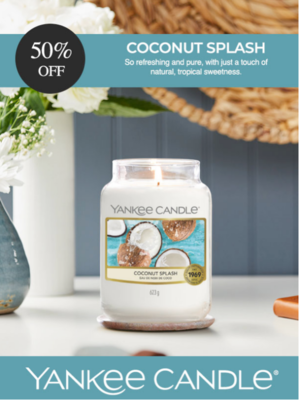We’ve listed 10 common problems people face when making homemade ice cream and offer expert tips to fix them. Achieve creamy, flavourful results every time!
Making homemade ice cream can be an incredibly fun and rewarding experience, but sometimes it doesn’t all go quite as planned! Trust me, I’ve been there and had many disappointments; however, be assured that it’s times when things don’t go quite to plan that we learn!
From icy textures to bland flavours, several challenges can leave you frustrated. But fear not! There are solutions to all these issues.
In this article, we’ll address the 10 most common homemade ice cream problems, explain what the likely cause is and show you solutions on how to fix the problem so that you can create smooth, creamy, and delicious homemade ice cream every time.
So let’s get into the 10 most common problems encountered when making homemade ice cream.
10 Common Homemade Ice Cream Problems, Possible Reasons Why And How To Fix Them
1. Ice Crystal Formation
 Problem: Probably the No.1 problem people encounter is that instead of having a smooth texture, your ice cream develops icy crystals.
Problem: Probably the No.1 problem people encounter is that instead of having a smooth texture, your ice cream develops icy crystals.
Why it occurs: Ice crystals form when water molecules in the mixture freeze slowly, allowing larger crystals to develop.
Solution: Ensure your ice cream maker bowl is thoroughly frozen and use stabilisers like 1/4 teaspoon of gelatin or pectin per 500ml of base to prevent crystal formation.
2. Rock-Hard Ice Cream
Problem: Coming in a close second; rock-hard ice cream. Your ice cream becomes too hard after freezing, making it difficult to scoop.
Why it occurs: This happens when there’s too much water content or not enough fat and sugar to lower the freezing point.
Solution: Add 1-2 tablespoons of alcohol (such as vodka or rum) per 500ml of base to lower the freezing point, or increase fat content by using more cream or egg yolks to create a softer texture.
👉🏽 For more detailed information and solutions on ice cream being rock hard, head over to our article – Rock Solid Solutions: Why Is My Homemade Ice Cream So Hard?
3. Soft, Runny Ice Cream
 Problem: Your ice cream doesn’t freeze properly and remains runny.
Problem: Your ice cream doesn’t freeze properly and remains runny.
Why it occurs: This can be due to insufficient freezing time, too much sugar, or too much alcohol in the mixture.
Solution: Ensure your base is chilled to at least 4°C before churning, and make sure the ice cream maker is set to the proper temperature for churning. Reduce sugar content by 10-20% if necessary.
4. Curdled Custard Base
Problem: The custard base curdles or separates during cooking, resulting in a lumpy texture.
Why it occurs: This happens when eggs are heated too quickly or to too high a temperature, causing proteins to coagulate unevenly.
Solution: Use a double-boiler to gently heat the custard, and stir constantly to avoid curdling. If it curdles, quickly strain the mixture and cool it immediately.
5. Freezer Burn
Problem: Freezer burn ruins the taste and texture of your ice cream.
Why it occurs: Freezer burn happens when ice cream is exposed to air, causing moisture to evaporate and refreeze on the surface, forming ice crystals.
Solution: Store your ice cream in an airtight container and press plastic wrap or wax paper directly on the surface to prevent air exposure.
👉🏽 For more detailed information on the dreaded freezer burn problem, check out our article – How To Store Homemade Ice Cream To Prevent Freezer Burn.
6. Bland Flavour
Problem: Your ice cream lacks flavour, or added ingredients don’t come through.
Why it occurs: Cold temperatures can dull flavours, or ingredients may not have had enough time to infuse.
Solution: Use high-quality, fresh ingredients, and let your base rest for 4-24 hours in the refrigerator to allow the flavours to develop fully.
7. Uneven Mix-In Distribution
Problem: Your chocolate chips, nuts, or fruit are not evenly distributed in the ice cream.
Why it occurs: This happens when mix-ins are added too early in the churning process or when they’re too heavy for the ice cream base.
Solution: Add mix-ins during the last few minutes of churning to ensure they are well incorporated without sinking to the bottom.
8. Too Sweet or Not Sweet Enough
Problem: The sweetness level is off, making the ice cream too sugary or bland.
Why it occurs: This can be due to inaccurate measurements, variations in ingredient sweetness, or not accounting for how freezing affects perceived sweetness.
Solution: Taste your base before churning and adjust the sugar as needed. Remember, freezing dulls sweetness, so your base should taste slightly sweeter than you want the final product to be.
9. Greasy or Oily Texture
Problem: Your ice cream has an unpleasant greasy mouthfeel.
Why it occurs: This is often caused by using too much fat in the recipe or over-churning, which can cause fat globules to coalesce.
Solution: Avoid over-churning and don’t add too much fat. A balance between fat and water is essential to avoid an oily texture.
10. Churning Issues
Problem: Your ice cream maker isn’t freezing the mixture properly, leading to poor consistency.
Why it occurs: This can be due to a warm mixture, insufficient freezing of the ice cream maker bowl, or overfilling the machine.
Solution: Make sure your machine’s bowl is properly frozen, and check the instructions for proper usage. Be sure to pre-chill your ice cream base prior to churning. If your machine is overfilled, it won’t churn correctly, so only fill it two-thirds full.
These explanations should help you to understand not just how to fix these common ice cream-making problems, but also why they occur in the first place.
Equipment-Related Ice Cream Making Problems
While it’s often said that a workman shouldn’t blame his (or her) tools, sometimes the tools themselves can actually be the root of the problem!
When using appliances to make homemade ice cream, the equipment you use plays a crucial role in achieving that perfect creamy texture and delicious flavour. If you’re encountering issues with your ice cream maker or other tools, it might just be time to take a closer look at what you’re working with.
Here are some common equipment-related problems and their solutions to ensure your ice cream-making experience is as smooth as possible.
Inconsistent Freezing with Freezer Bowl Machines
 Problem: Ice cream doesn’t freeze evenly or takes too long to freeze.
Problem: Ice cream doesn’t freeze evenly or takes too long to freeze.
Why it occurs: The freezer bowl may not be cold enough or the room temperature is too warm.
Solution: Ensure the freezer bowl is frozen for at least 24 hours at -18°C or below. Use the machine in a cool room and work quickly.
Hand-Crank Churner Producing Grainy Texture
Problem: Ice cream from a hand-crank churner has a grainy texture.
Why it occurs: Inconsistent or slow churning can lead to large ice crystal formation.
Solution: Maintain a steady, consistent churning speed. Consider using stabilisers in your recipe.
No-Churn Methods Resulting in Icy Texture
Problem: No-churn ice cream recipes produce an icy texture.
Why it occurs: Lack of churning can lead to larger ice crystal formation.
Solution: Use ingredients high in fat, like double cream and condensed milk. Stir the mixture every 30 minutes for the first 2-3 hours of freezing.
👉🏽 For a more detailed explanation, please see our article – How to Make Homemade Ice Cream Without an Ice Cream Maker – which provides hints, tips and ideas for making ice cream using the no-churn method.
Compressor Machine Not Freezing
Problem: The ice cream mixture doesn’t freeze in a compressor machine.
Why it occurs: The compressor may be faulty or the mixture is too warm.
Solution: Check if the compressor is working properly. Chill your mixture thoroughly before churning.
👉🏽 Perhaps it could be time to replace your trusty ice cream maker and upgrade? Head on over to our article – What is the Best Ice Cream Maker? A Detailed Review -to see a selection of ice cream makers available now.
More Specific Measurements For Solutions
If you’re still encountering problems with your homemade ice cream despite following the above general advice, consider that more specific measurements may be the key to success.
Precision in your ingredients can make a significant difference in achieving the desired texture and flavour.
- For softer ice cream: add 1-2 tablespoons of alcohol per 500ml of base.
- To prevent ice crystals: use 1/4 teaspoon of gelatin or pectin per 500ml of base.
- For a richer base: replace 60ml of milk with cream in your recipe.
- To enhance flavour: add an extra 1/4 teaspoon of vanilla extract or other flavourings per 500ml of base.
By fine-tuning your measurements, you can tackle common homemade ice cream-making issues more effectively and enjoy a smoother, creamier ice cream every time.
Summarising Problems and Quick Fixes
| Problem | Possible Cause | Quick Fix |
|---|---|---|
| Icy Texture | Slow freezing or too much water content | Ensure fast freezing; add stabilisers like gelatin or pectin |
| Rock-Hard Ice Cream | Low fat/sugar or over-freezing | Add alcohol or increase fat for a softer texture |
| Runny Ice Cream | Mixture not cold enough before churning | Pre-chill base to 4°C before churning |
| Bland Flavour | Insufficient infusion time or weak ingredients | Use quality ingredients; rest base 4–24 hours |
| Freezer Burn | Air exposure during storage | Press cling film or wax paper onto ice cream surface |
| Uneven Mix-Ins | Added too early or too heavy | Fold in mix-ins during the last minutes of churning |
| Curdled Custard Base | Overheating eggs during cooking | Cook over gentle heat; strain if curdled |
| Greasy Texture | Too much fat or over-churning | Balance fat content; churn only until just set |
| Too Sweet / Not Sweet Enough | Misjudged sugar ratio | Taste base before churning; adjust sugar by 10–20% |
| Churning Issues | Overfilled or poorly chilled machine | Only fill two-thirds full; pre-chill mixture |
Preventative Measures to Avoid these issues:
- Always use fresh, high-quality ingredients.
- Measure ingredients accurately using kitchen scales.
- Chill your base thoroughly before churning.
- Ensure your ice cream maker bowl is completely frozen.
- Don’t overfill your ice cream maker.
- Use an instant-read thermometer to monitor temperatures.
- Store ice cream properly in airtight containers.
- Experiment with small batches to perfect your recipe.
- Keep your equipment clean and well-maintained.
- Follow recipes closely until you’re comfortable making adjustments.
FAQ Section addressing common questions about homemade ice cream

We’ve listed a selection of commonly asked questions regarding problems encountered with making homemade ice cream:
Q1: Why is my homemade ice cream icy?
A1: Icy texture often results from large ice crystals. Use stabilizers, churn quickly, and ensure proper storage to prevent this.
Q2: Can I make ice cream without an ice cream maker?
A2: Yes, you can use no-churn methods involving whipped cream and condensed milk, or the freeze-and-stir method.
Q3: How long does homemade ice cream last?
A3: Properly stored homemade ice cream typically lasts 1-2 weeks in the freezer.
Q4: Can I use alternative sweeteners in my ice cream?
A4: Yes, but be aware that different sweeteners can affect texture and freezing point. Adjust recipes accordingly.
Q5: Why does my ice cream melt so quickly?
A5: Fast melting can be due to high sugar content or lack of stabilisers. Adjust your recipe and ensure proper freezing temperature.
Q6: How can I make my ice cream softer and easier to scoop?
A6: Add a small amount of alcohol, increase fat content, or use more sugar to lower the freezing point.
Q7: Can I use non-dairy milk to make ice cream?
A7: Yes, but you may need to adjust the recipe and use stabilisers to achieve a creamy texture.
The Final Scoop
Whether you’re dealing with icy textures, curdled custards, or bland flavours, these common homemade ice cream problems all have simple fixes.
By understanding these issues and applying the right techniques, you’ll create ice cream that rivals any store-bought variety, one could argue even better, as you know exactly what’s gone into your homemade ice cream.
Making homemade ice cream is a fun and rewarding way to experiment with flavours and textures, and to create your own delicious homemade ice cream.
By following our top tips, you’ll be on your way to creating smooth, creamy, and delicious ice cream that rivals anything store-bought. Get creative, learn from your errors, stay patient, and enjoy every scoop!
Which of these ice cream-making solutions do you think will improve your homemade creations the most? Or is there a common problem we missed? Share your thoughts and ice cream challenges in the comments below!
If you found this article helpful, you might also like – How To Make Homemade Ice Cream Soft, Fluffy, And Scoopable! – for more delicious hints, tips and inspiration.
We hope that you have enjoyed our article – 10 Common Homemade Ice Cream Problems And How To Fix Them – and you have found solutions to problems you have been encountering. If you have any questions, please drop us a comment below and we’ll happily get back to you.
Stay connected for more homemade ice cream inspiration! Share your homemade ice cream masterpieces with us on social media, and connect with a community of ice cream enthusiasts. Join us for mouthwatering recipes, expert tips, and exclusive updates. Follow us on Pinterest, Instagram, Facebook, and X by clicking on any of the social media icons below.
Disclosure: This post contains affiliate links. If you click on these links and make a purchase, we may earn a small commission at no additional cost to you. This helps support our website and allows us to continue creating content. Thank you for your support!















































This is such a helpful guide for anyone who’s had a few ice cream disasters in the kitchen—myself included! The tips for preventing ice crystals and adjusting sweetness levels are especially useful. I’m curious—when it comes to adding alcohol to soften the texture, is there a particular type that works best without altering the flavor too much? And for those of us trying non-dairy options, any advice on keeping that creamy texture? I’d love to hear your thoughts!
Hi Kelly Jean,
Thank you for your kind words! Really pleased to hear you enjoyed our article and the useful tips we have shared.
Great questions! When it comes to adding alcohol, vodka or rum work well since they soften the texture without significantly altering the flavour. Just adding 1-2 tablespoons per 500ml of ice cream base can really make a difference. For more detailed guidance on the balance needed please see our article – The Art and Science of Blending Alcohol with Ice Cream – which takes you through the process offering up more hints and guidance.
For non-dairy options, ideally you want to use high-fat ingredients like coconut milk or cashew cream to help with the creamy texture along with stabilisers like agar agar or xanthan gum that help maintain a creamy texture without the dairy.
Hope we’ve answered your queries, but do come back to us if there’s anything else.
Thanks for dropping by,
Cherie :o)
Hi Cherie –
I have always opted to buy ice cream from a grocery store. However, there is something novel about making your own. This article has many tips to empower people to create their own ice cream. Whether it is freezer burn or uneven mix-in distribution, there is a solution to ensure your ice cream is perfect.
Appreciate the tips.
G
Hi Godwin,
Thanks so much for your comment, appreciate you sharing your thoughts.
You’re absolutely right — there is something special about creating your own ice cream, and it’s so satisfying once you get the hang of a few key tips.
Our website lists many articles offering up hints, tips, and guidance for making delicious homemade ice cream, so you’re bound to find answers to any questions you have.
One such article is – How To Make Homemade Ice Cream Soft, Fluffy, And Scoopable!
Don’t hesitate to check in if you need help with anything.
If you do ever give it a go, we’d love to hear how it turns out — happy scooping!
All the best
Cherie